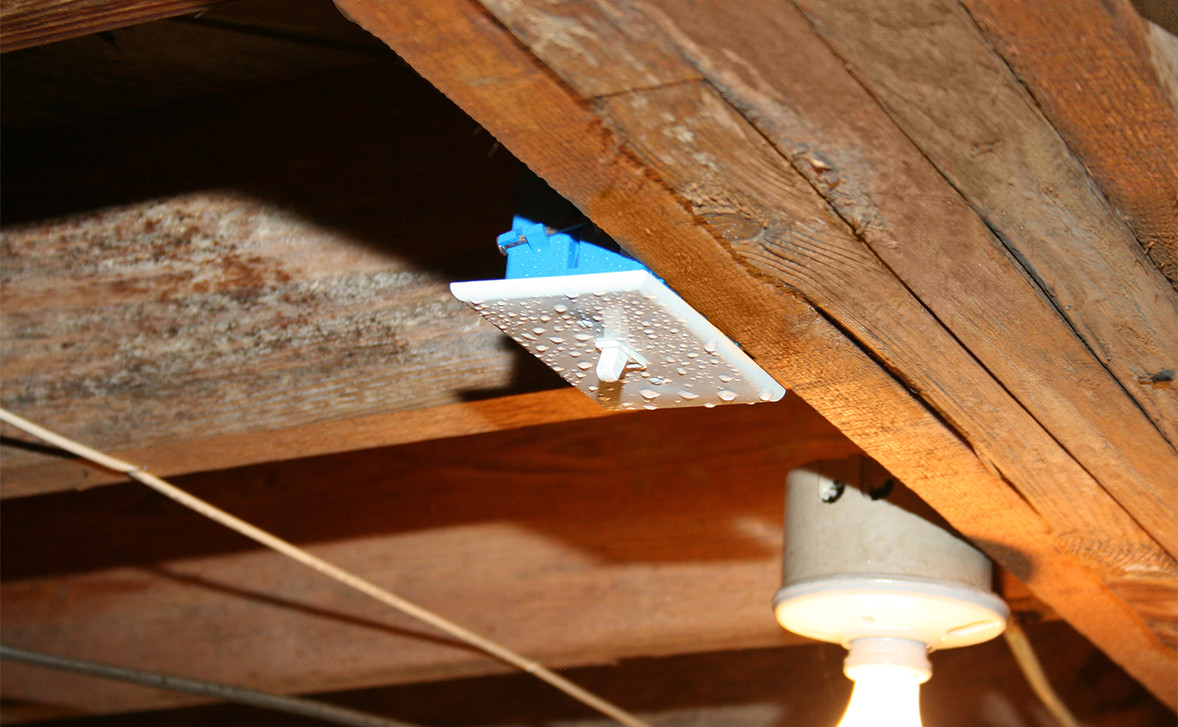Crawlspaces are unoccupied and unfinished areas of a home that are located between the soil and the lowest level of the structure. They're called crawl spaces because in many houses they are only high enough to crawl through. They typically substitute for a slab foundation in places where the land is not level. Because the crawlspace is built over soil, moisture from the soil can get into the space. Openings from the crawl space into the home for plumbing, gas lines, electrical and other systems allows this moisture into the home. If your crawl space exhibits any of these three signs, it's important to consider closing your crawl space.
1. Mold or Mildew Growth
Visible mold or mildew growth on the floor joists is a guarantee that your crawl space has too much moisture. Mold and mildew just need an organic surface, moisture and some warmth, and they will proliferate. Mold releases spores that are known to trigger allergies and asthma. Even if you don't go into the crawlspace, you might experience the symptoms of mold exposure. The poor indoor air quality caused by the mold and mildew may lead to chronic health problems, such as headaches, irritation of your eyes, nose, throat and skin, extreme fatigue and a flu-like illness that won't go away. Closing the crawl space creates a conditioned space under the home reducing excess moisture. Adding a dehumidifier or air inducer will further help curb the growth of the mold and mildew in your crawlspace.
2. Structural Damage to Wood or Masonry
Crawl spaces with too much moisture may become structurally unsound. Because the crawl space has masonry that is designed to support the structure, any damage puts your entire home at risk of major foundation problems. The condensed moisture seeps into these materials and degrades them. Such problems are costly and complicated to fix. The moisture is also attractive to wood-destroying insects, such as termites and carpenter ants. These pests can eat through damp wood and weaken it to the point it can no longer support the weight of your home. If any of your heating and cooling system's components are located in the crawl space, they may also be damaged by condensation.
3. Visible Moisture and Musty Odors
If you can see condensation on the plastic sheeting, studs, joists or other components of the crawl space, consider closing the crawl space. You may also notice moisture-related problems on the floor that sits directly above the crawl space, cupping of hardwood floors is many times caused by high humidity in the crawl space. The excessive moisture may cause the insulation to sag and makes the insulation ineffective. If the problem isn't corrected, extensive repairs will be needed. In addition to the visible changes in your home that occur as a result of a damp crawl space, you may also notice a constant odor. If you smell a musty or mildew type of scent, it's likely from the high humidity in the lowest part of your home. Those odors can make you get headaches, feel nauseated or experience intense fatigue. A closed crawl space lowers the relative humidity in the crawl space, which can eliminate the source of the foul odors.

